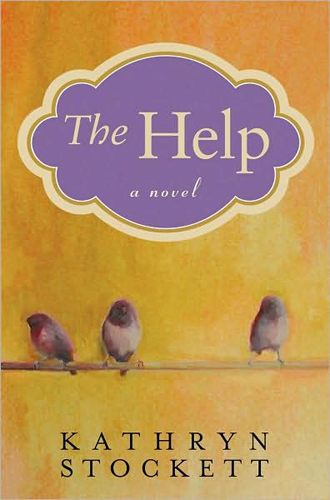By Kathryn Stockett
★★★★★
Five Things I Liked About The Help:
1. Camaraderie between the maids.
2. Characters & characterization.
3. Storytelling, of the story and in the story.
4. Love tangential to hate.
5. The feeling I got while reading it.
I was skeptical of The Help, as I am of any book that makes a run of the soccer-mom-book-club circuit, or makes an appearance on Oprah’s bookshelf. The Help became so trendy so fast, in fact, that although it was only released in 2009, it already has a feature film adaptation coming out this August. Do you know how fast that baby must have gone into production? Super, duper fast. Faster than Twilight fast.
But. BUT. It was actually good.
The Help is told from the perspective of three different women. Two of them – Aibeleen and Minny – are household maids for white women, polishing their silver, cooking their food, and raising their babies; the other, Miss Eugenia “Skeeter” Phelan, is a young white aspiring writer. When Skeeter is told by a New York publisher that she needs to come up with something innovative to write about, she toys with the seed of an idea – a dangerous, daunting, and bravely provocative idea. She decides to compile a book of interviews with colored maids about their white employers, some of which are Skeeter’s closest friends. But even if Skeeter can succeed in convincing maids to tell a white woman the truth and manage to get the book both written and published, her problems will only be just beginning. Because in Jackson, Mississippi, a secret like this won’t stay hidden forever, and when the truth comes out, you can be sure it’s going to turn the town upside-down and make its inhabitants as hot as a Mississippi kitchen in August.
The Help felt really reminiscent to me of The Secret Life of Bees, which I’m sure has a lot to do with the subject matter, but I think also a lot to do with the tone: heartfelt and warm, despite the cold cruelty of segregated southern life. One of the ways The Help achieved this warmth was by suffusing the story with love – love between the maids and their families, love between the maids and the white children they raise, love between the maids and their unlikely ally, Miss Skeeter, and even, sometimes, love between the maids and their employers. Stockett was painstaking in her portrayal of her characters and the varying kinds of relationships that tied them together. The relationships between the maids the white children that adored them until they grew up to become their parents with their parents’ beliefs was heartbreaking, the supportive relationships amongst the colored community were heartwarming, and the relationships between the colored community and the whites that abused them was just plain infuriating. These relationships are all navigated carefully to avoid stereotypes, and no character is either wholly good or bad*. The story also avoids getting overly caught up in the racial conflict, leaving room to explore the flaws in Skeeter’s world, too – her relationship with her mother, her on-and-off first boyfriend, her future, and herself.
One of the striking things about The Help was the time period. Reading about the hostile racism and segregation, my mind subconsciously conjured up an image of pre-1900 America, simply because the social climate felt so different from my experience of today that it felt like it belonged to another century altogether, but then Stockett would throw in some detail – the recent introduction of air conditioning, To Kill a Mockingbird’s release, the Kennedy assassination – that anchored the story where it belongs: in the 1960’s, only 50 years ago.
Another striking thing – an example of the deep-seeded hypocrisy rampant amongst the southern whites that really resonated with me – was when Skeeter points out the hypocrisy of the Junior League raising money for the Poor Starving (black) Children of Africa when they won’t even pay their own black maids, with plenty of little mouths of their own to feed, minimum wage.
The Help was a lovely surprise. A resonant story that manages to be both critical and heartfelt at the same time, it is as much an enjoyable read as it is a candid portrayal of one of the more shameful periods of our country’s history. However, though the portrayal is not a forgiving one, neither does it flatly condemn everything about that time, including as it does many nuanced moments of tenderness between the help and the women they work for.
*I was going to say that there’s no strict black and white… but then I realized that it would be a not entirely appropriate accidental pun.
Books Read This Year: 48
Top 100 Progress: 44/100


No comments:
Post a Comment